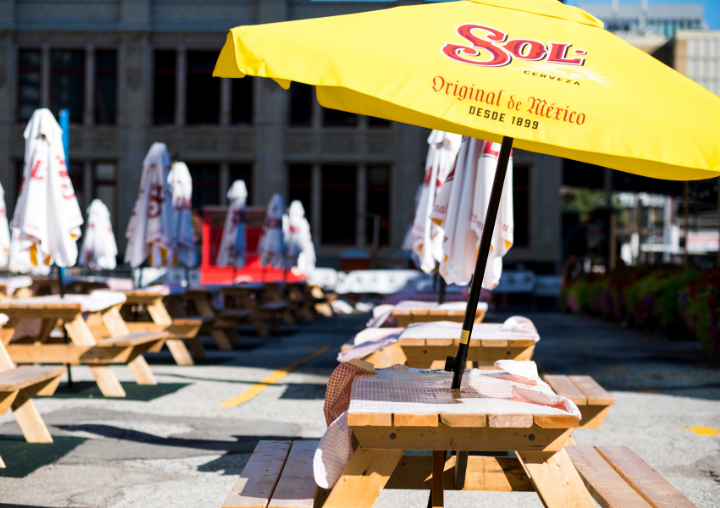
Ultimate AI Prompts to up Your Social Game
These six AI prompts can help build a strong social media framework that works for your business, not the other way around.

Selling prints online is a great way for artists to reach a broader audience, increase their income, and share their creativity with the world. This comprehensive guide will equip you with the knowledge and tools to showcase your artwork to a global audience and monetize your creative talent. Whether you’re an established artist or just starting, this guide will provide you with the essential steps to successfully sell your prints online.
As an artist, you have the unique advantage of selling original works or reproductions. Originals can include paintings, drawings, and other physical pieces, while reproductions can be prints or digital copies of your art. Selling directly allows you to maintain control over your work and pricing. This method involves producing original pieces or creating digital versions of your art that can be printed on demand. You’ll need to handle all aspects of the business, from production to marketing and sales.
If you have a keen eye for art but don’t create it yourself, consider curating and selling pieces from other artists. This involves selecting artwork, building relationships with artists, and handling the sales process. It’s a great way to support the art community and build a diverse catalogue of pieces.
Selling original art pieces can be lucrative, as these often command higher prices. Originals are unique, which adds to their value. Buyers often seek the exclusivity of owning an original piece of art, which can also increase in value over time. Original artworks can be sold through online galleries, personal websites, or even at art shows and exhibitions.
Reproductions include prints and digital copies of your original work. These can be sold in various formats such as framed, unframed, canvas prints, or digital downloads. Reproductions allow you to sell the same piece multiple times, maximizing your profit. This method is particularly effective for popular pieces that have a broad appeal.
Your art can also be printed on various products like mugs, t-shirts, phone cases, and more. This not only diversifies your product offerings but also helps in increasing brand visibility. Merchandise allows your art to reach different markets and provides more affordable options for fans of your work.
High-quality images are crucial for selling art online. Invest in a good camera or scanner to capture your art accurately. Ensure the lighting is even and the colours are true to the original piece. Use a professional setup with proper lighting to avoid shadows and reflections if possible.
Use editing software to enhance your images. Adjust brightness, contrast, and colours to ensure they look their best. Crop out any unnecessary background to focus solely on the art. Editing helps present your artwork in the best light and makes your online store look professional.
Select an e-commerce platform that suits your needs. Platforms like Moneris Online offer customization options to match your brand aesthetic and integrate well with payment processors to provide a seamless checkout experience. Moneris Online allows you to create a fully functional online store with secure payment processing, making it easy for customers to purchase your prints.
Create a cohesive brand identity through your store design. Use a consistent colour scheme, fonts, and layout that reflect your art style. Include a compelling bio and artist statement to connect with your customers. A well-designed store enhances the shopping experience and builds trust with your audience.
Add your art prints to your store. Write detailed descriptions for each piece, including dimensions, materials, and special features. Use high-resolution images to showcase your work. Detailed and accurate product listings help customers make informed purchasing decisions and reduce the likelihood of returns.
Look at what similar artists are charging for their prints to get an idea of the market rate. Consider factors like the size of the print, the medium used, and your experience level. It’s important to balance competitive pricing with the value you offer. Check online marketplaces, art galleries, and artist websites to gather comprehensive data.
Factor in the cost of materials, printing, packaging, and shipping. Ensure your prices cover these costs while providing a reasonable profit margin. Consider both fixed and variable costs, such as equipment, supplies, and labour. Additionally, include indirect costs like marketing and platform fees to get a complete picture of your expenses.
While it’s important to cover your costs and make a profit, your prices should also be competitive. Offering a range of prices can attract different types of buyers. For instance, limited-edition prints can be priced higher, while open-edition prints can be more affordable. Regularly review and adjust your prices based on market trends and feedback.
Decide whether you’ll print your art yourself or use a professional printing service. Professional services often offer higher quality and more options, such as different paper types and finishes. If you choose to print yourself, invest in a high-quality printer and archival-grade materials to ensure longevity and vibrancy of your prints.
Before selling, order samples to ensure the quality meets your standards. Check the colours, sharpness, and overall finish of the prints. This step is crucial for maintaining quality control and ensuring your customers receive a product that accurately represents your original artwork. Use these samples for promotional photos and as physical examples for potential buyers.
Create profiles on social media platforms where you can showcase your art. Regularly post updates, behind-the-scenes content, and engage with your followers to build a community around your work. Platforms like Instagram and Facebook are excellent for visual storytelling, while LinkedIn can help you connect with industry professionals.
Use relevant keywords in your product titles, descriptions, and blog posts to improve your search engine ranking. This helps potential customers find your store when searching for art prints online. Conduct keyword research to identify popular search terms related to your art, and incorporate these keywords naturally into your content.
Collect email addresses through your website and at art shows. Send regular newsletters with updates on new prints, special offers, and behind-the-scenes content. Email marketing is a direct way to reach interested customers and keep them engaged with your brand. Offer incentives like discounts or exclusive previews to encourage sign-ups.
Platforms like Instagram and Pinterest are great for visual artists. Share high-quality images of your prints, time-lapse videos of your creative process, and engage with your audience through comments and direct messages. Use stories, reels, and live sessions to create interactive content. Engage with your followers by responding to comments and messages promptly.
Partner with social media influencers and bloggers in the art community to reach a wider audience. They can help promote your work to their followers, increasing your visibility. Choose influencers whose style and audience align with your brand. Collaborations can include sponsored posts, giveaways, or joint live sessions.
Selling prints through various online platforms can expand your reach and customer base. However, choosing platforms that align with your business goals and provide a good return on investment is important. Ensure that you’re aware of any transaction fees and the level of competition on these platforms. To stand out, differentiate your shop through unique branding, excellent customer service, and high-quality product listings.
Having your website gives you full control over your brand and customer experience. It requires more effort to set up and maintain but can be very rewarding. Your website can serve as a central hub for all your online activities, from selling prints to blogging about your creative process. Ensure it integrates well with payment processing solutions like Moneris Online for a seamless customer experience.
Participate in local art fairs and exhibitions to showcase your work. These events allow you to connect with customers in person and gain exposure. Art fairs are also a great way to network with other artists and potential buyers. Ensure you have business cards and promotional materials ready to share with interested attendees.
Work with local galleries to display and sell your prints. Galleries often have a loyal customer base and can help promote your work. Building relationships with gallery owners can lead to more opportunities for exhibitions and sales. Ensure your pricing is consistent across all sales channels to maintain your brand's integrity.
Invest in high-quality packaging to protect your prints during shipping. Use sturdy cardboard tubes or flat mailers, and consider adding a protective sleeve for additional safety. Proper packaging ensures your prints arrive in perfect condition, which is crucial for customer satisfaction. Branded packaging can also enhance the unboxing experience for your customers.
Select a shipping service that offers tracking and insurance. This ensures your prints arrive safely and gives your customers peace of mind. Offering multiple shipping options, such as standard and expedited shipping, can cater to different customer needs and enhance their shopping experience.
Include shipping costs in your pricing strategy. Accurately calculating these costs ensures you don’t lose money on shipping. Be transparent with your customers about shipping fees and delivery times. Offering free shipping for orders over a certain amount can also encourage higher purchase values.
Keep your customers informed about their order status, including confirmation, shipping, and delivery updates. Clear communication builds trust and enhances the customer experience. Use automated email updates to keep customers in the loop throughout the order process.
Address any issues or complaints quickly and professionally. Whether it’s a delay in shipping or a problem with the print, resolving issues promptly can turn a negative experience into a positive one. Have a clear return and refund policy in place to manage customer expectations and maintain satisfaction.
Ask your customers to leave reviews on your website and social media pages. Positive reviews build credibility and encourage new customers to make a purchase. Offer incentives, such as discounts on future purchases, to encourage customers to leave feedback. Displaying reviews prominently on your website can also build trust and attract new buyers.
Selling prints online can be a rewarding venture for artists. By following these steps, you can set up a successful online store, reach a global audience, and turn your passion into a profitable business. Remember, consistency and quality are key to building a loyal customer base and achieving long-term success in the online art market.

These six AI prompts can help build a strong social media framework that works for your business, not the other way around.

Discover the top strategies for selling products online in Canada. Moneris offers the tools and solutions you need to sell online successfully.

Find out the real challenges small business owners face during summer along with practical tips to stay resilient and thrive through the rush.

One of the most meaningful ways your business can show up is by becoming an ally to queer-owned businesses, not just in June but year-round.